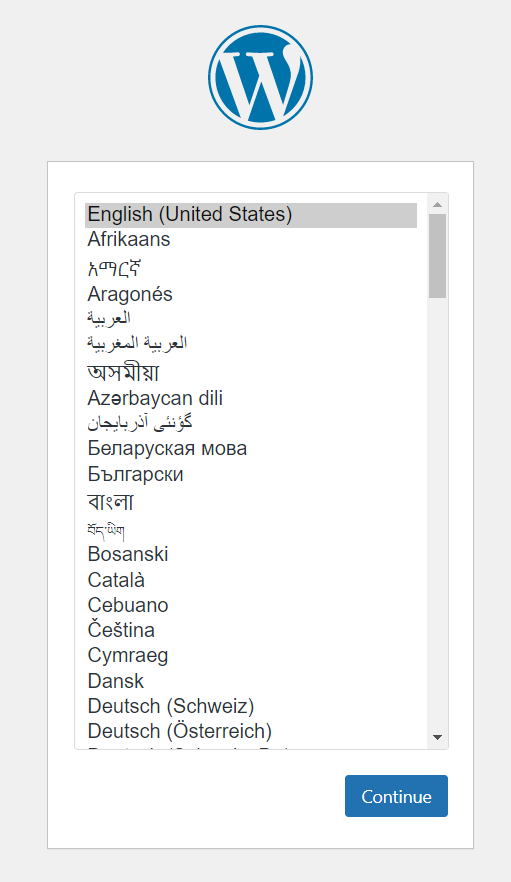Prerequisites
- Go to Package Center and install Docker
- Go to File stations and navigate to Docker folder
- Create two folders,
wp-appandwp-db - Open Docker on Synology and select Registry tab
- Search for
WordPressandMySQL, download both withlatesttag
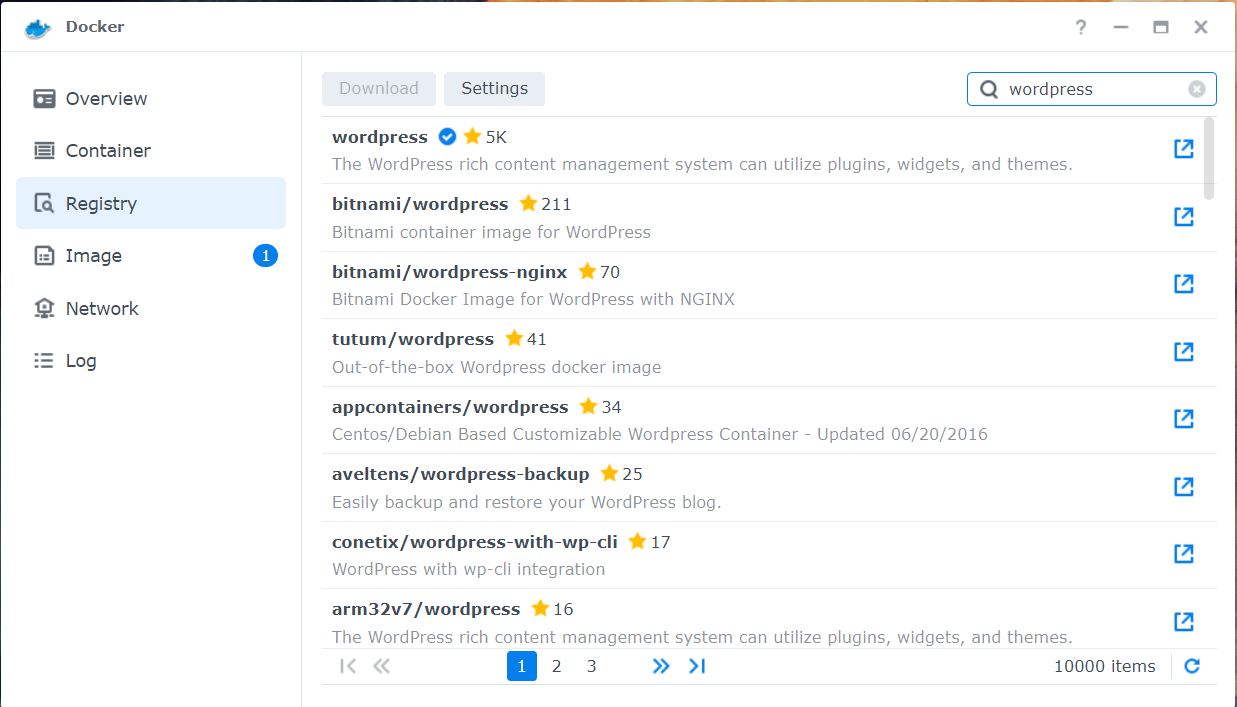
- Buy me a drink on Ko-fi 🙂
Create MySQL Container
- Go to Container tab and Create a Container:
- Select Image: mysql
- Network: bridge
- Container Name: wp-db
- Go to Advanced Settings
- Add the following Enviroment variables:
- MYSQL_ROOT_PASSWORD = mysqlrootpassword
- MYSQL_DATABASE = wp
- MYSQL_USER = wpuser
- MYSQL_PASSWORD = wppass
- Review, click Save, then Next
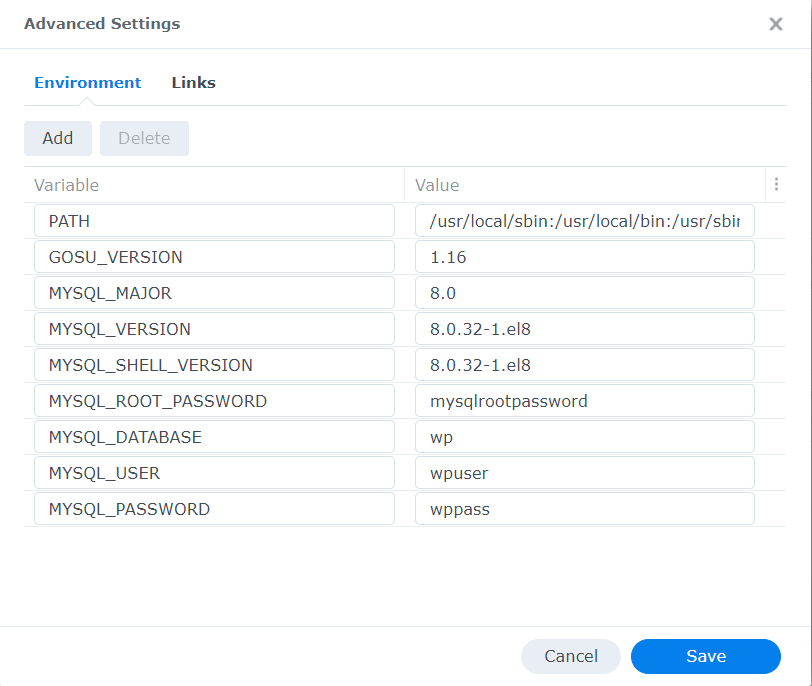
- Leave the Port settings as default, click Next
- Click Add Folder, navigate to the
wp-dbfolder - Add the mount path as
/var/lib/mysql
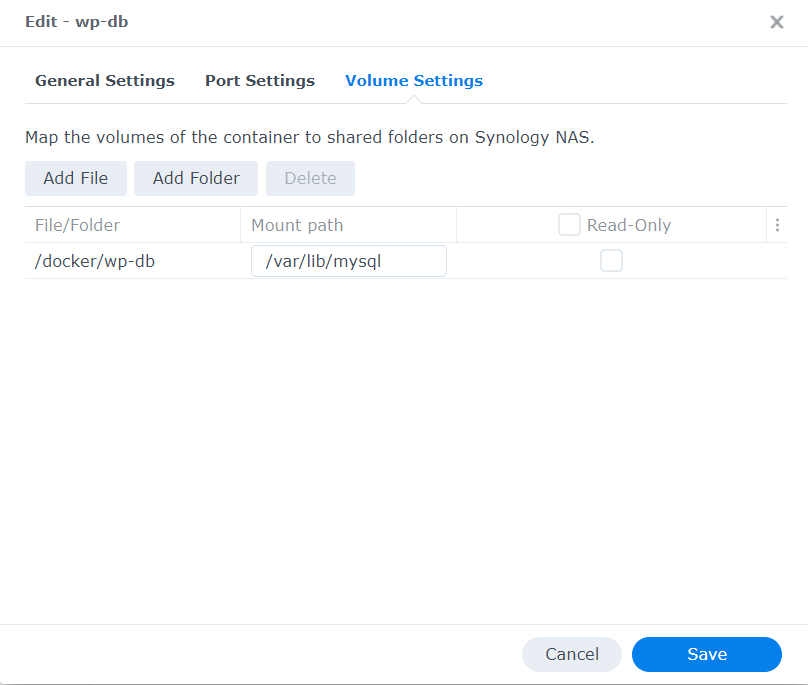
- Click Next and Done
Before you continue, be sure to check that the DB is ready. This should take ~5 mins.
While waiting, go to Prerequisites Step 6.
- Double-click the Container and go to Logs tab
- Look for the line that says
/usr/sbin/mysqld: ready for connections.
Create WordPress Container
- Go to Container tab and Create a Container:
- Select Image: wordpress
- Network: bridge
- Container Name: wp-app
- Enable auto-restart
- Go to Advanced Settings
- Add the following Enviroment variables:
- WORDPRESS_DB_HOST = wp-db
- WORDPRESS_DB_USER = wpuser
- WORDPRESS_DB_PASSWORD = wppass
- WORDPRESS_DB_NAME = wp

- Select Links tab and click Add
- Select the Container name that you’ve created for MySQL, eg. wp-db
- Click Save, then Next
- Set the Local Port to
8080, click Next - Click Add Folder, navigate to the
wp-appfolder - Add the mount path as
/var/www/html
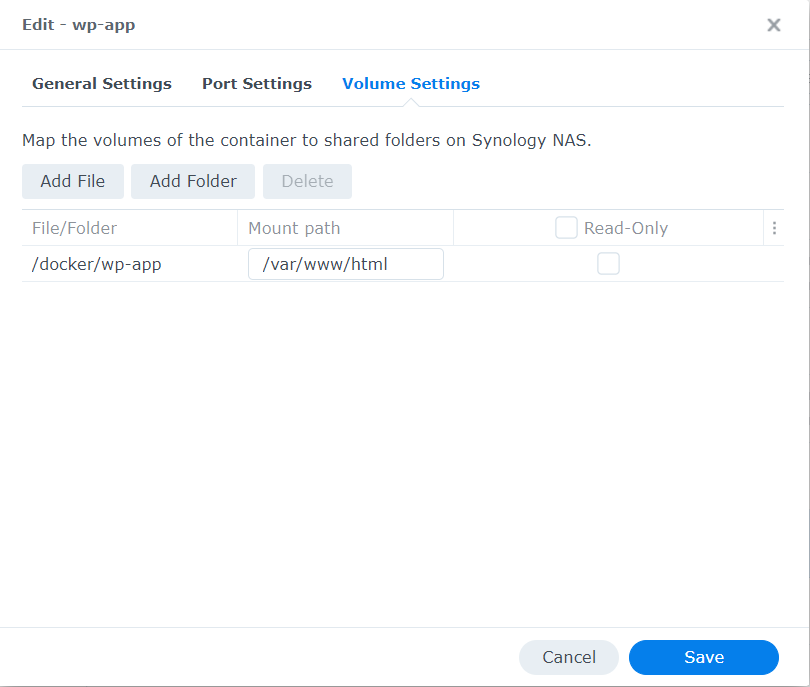
- Click Next and Done
Go get a coffee and send me a tip as this will take at least 5 mins and if you go to your NAS IP Address with the port you’ve defined above on a browser, eg. http://192.168.1.10:8080
You’ll be greeted WordPress installation screen.
